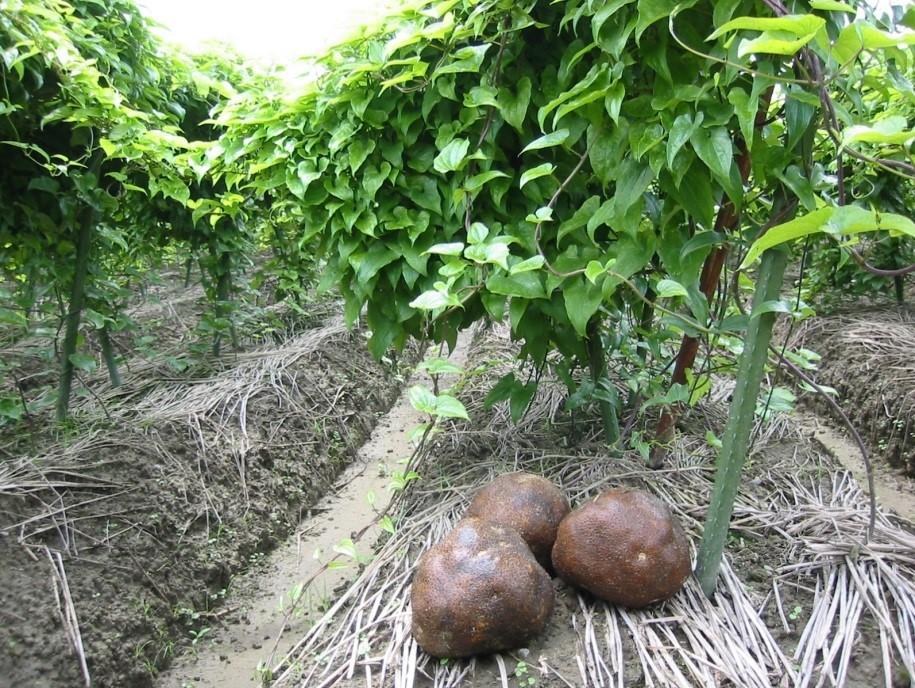Kaga Maruimo
| Registration Number | 17 |
|---|---|
| Name of the GI | Kaga Maruimo, KAGAMARUIMO |
| Class | Vegetables/ Cereal grains/Pulses |
| Date of Protection | 2016/09/07 |
| Producing Area |
Ishikawa Prefecture
Nomi City and Takandō-Machi, Noda-Machi, and Hitotsuhari-Machi in Komatsu City, all in Ishikawa Prefecture |
| Applicant - Name and Address | Minami Kaga Chiku Maruimo Producers’ Association 40 Taisei-Machi, Nomi City, Ishikawa Prefecture, 929-0113, JAPAN |
| Brand-site |
KAGAMARUIMO is a kind of black-skinned yam (group of yams) produced in Nomi City and Komatsu City, Ishikawwa Prefecture. Its leaves are usually shaped liked ginkgo biloba leaves giving it the name of ginkgo potato, and the yam itself has a unique round shape like a softball. The stickiness when grated is several times greater than that of Chinese yams (a group of yams that we often see), and if you pick up the puree, it stretches from 20 cm to 30 cm. It also has a crunchy texture, a distinctive rich yam flavor, and high nutritional value.
There are various ways to eat the yam, such as Tororo where it is simply grated, Isobeage (fried and wrapped in nori), Dangojiru (potato dumpling soup), and Okonomiyaki (savory pancakes). Besides that, making use of its high viscosity and strong flavor, it is used for various foods such as buckwheat noodles, udon, Japanese sweets, and processed seafood (hanpen, chikuwa).
In this way, KAGAMARUIMO was recognized as a high-class food material from long ago, and was presented at the Daijyosai Festival (one of the ceremonies after the Emperor ascended to the imperial throne) in 1990.
It has been confirmed by previous surveys that to bring out the best of KAGAMARUIMO and to get a good harvest, soft soil with good drainage, deep furrows, and staking are essential. Stakes are set up around June when sprouts emerge. In the following month, the yam vines are wound on strings stretched over the stakes so that they do not get tangled. As a result, disease and insect pests are reduced, the leafy area which receives light is increased, and that helps growth of the yams.
It has been reported that KAGAMARUIMO took root in the area in around the 1910s (early Taisho era), when Mr. Sawada and Mr. Akita, two pioneering farmers, put efforts into research on round yam cultivation and popularized it in their neighborhood. In 1934, the Tedori River flowing through this area flooded, and a large amount of river sand flowed into the rice fields. It became apparent that the characteristic of the yam. the large round shape and the puree's strong stickiness, were more pronounced when the yams were grown in the place where river sand and the soil of the rice paddy were mixed. The current round yam production area almost coincides with the flow path of the flood of 1934, so it could even be said that the flood created the suitable soil for its cultivation.


